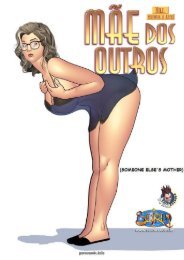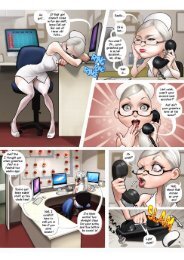AmericanCinematographer201201
Create successful ePaper yourself
Turn your PDF publications into a flip-book with our unique Google optimized e-Paper software.
Top: String Theory begins in a dusty room where a girl (Evelina Mambetova) sits motionless
and covered in a layer of silt. Middle: Awaking, the girl shakes off the silt; the action was captured at
1,000 fps. Bottom: The girl explores her strange surroundings.
and he is quite knowledgeable, so I didn’t
have to be entirely specific about the lighting
needs for each shot.”
As the girl starts to explore her
surroundings, she is lit primarily with the
practicals. For fill and accents, Romano used
the 2x2 Kino heads behind sheets of 1⁄2
CTO, Opal and 250 diffusion. For a shot
showing the girl using an airbrush to drench
an orchid in a coat of red paint, and another
showing her contemplating a table covered
in knickknacks, the Kinos served as close,
soft keylights.
Romano used a variety of different
frame rates throughout the film. “I try to err
on the side of giving people more frames
[than needed],” he says. “You can always
go to 24 fps in post, and you can ramp your
shots in post. However, you get a slightly
different 24-fps look when you originate in
high speed because you’re using a narrower
shutter angle — about 1 ⁄2,000 of a second.
You get a sharper image and choppier playback.”
In another scene, the girl is bathed in
a light that matches the blood-red color of
the orchid, and off-camera fans blow her
hair and garments in billowing ripples.
Initially, Romano shot the scene at 1,000 fps
with red gels on four overhead 2K scoops,
but he soon noticed a problem with image
softness. “We couldn’t get good focus on
our subject,” he says. “Light moves very
slowly at the red end of the spectrum.”
He finished shooting the scene with
the red gel, then removed the gels and
reshot the scene with diffused, uncolored
tungsten light. “Because the whole shot
was red, we could add the color [in post],
and that way the shots could be in focus,”
he explains. “I was on another job recently
where we came across the same issue, but
red wasn’t the only color of light in the
frame. If you have a mix of light, you can’t
really cheat it.”
In another corner of the girl’s reality,
she finds a wood box with geometric
shapes cut into its side. Peering into a seam,
she sees that the inside of the box is lined
with mirrors, reflecting to infinity on all
sides, and contains a small swarm of butterflies.
To capture the girl’s point of view, the
filmmakers constructed a scaled-up box in
which only the bottom and one of the four
14 January 2012 American Cinematographer













